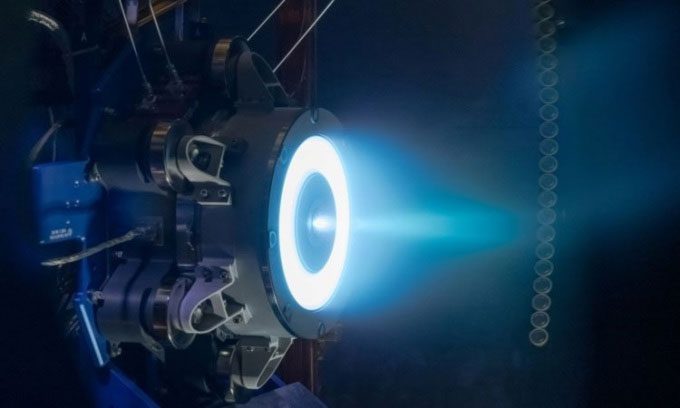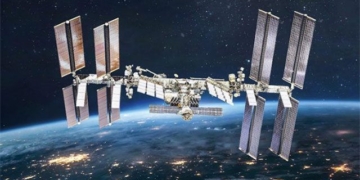The Advanced Electric Propulsion System (AEPS) with a power of 12 kilowatts will be used on NASA’s future lunar space station.
NASA and aerospace company Aerojet Rocketdyne have successfully completed quality testing for the Advanced Electric Propulsion System (AEPS), a 12-kilowatt solar electric propulsion (SEP) engine designed for long-duration missions such as traveling to the Moon and beyond. AEPS is touted as the most powerful electric propulsion engine (also known as an ion thruster) ever produced, according to a report by Space on November 9. The 12-kilowatt power is enough to power over 1,330 LED light bulbs. Previously, NASA announced the commencement of a series of quality tests back in July.

The AEPS engine tested in a vacuum chamber. (Photo: NASA).
“AEPS is truly a next-generation technology,” said Clayton Kachele, project manager for AEPS at NASA’s Glenn Research Center. “Current electric propulsion systems operate at around 4.5 kilowatts. Here, we have significantly increased the power within a propulsion engine. This capability opens up new opportunities for future space exploration. AEPS will enable us to travel faster and further.”
The blue exhaust plume from AEPS during quality testing is generated from ionized xenon gas, leading to the term ion thruster. While conventional chemical propulsion systems use liquid propellant to create a short but powerful energy burst that propels spacecraft in the desired direction, electric thrusters utilize inert gas propellant, offering less energy but for a much longer duration, resulting in higher efficiency that can be advantageous for long-term space missions.
The goal is to use AEPS on NASA’s upcoming Gateway space station by equipping it with three AEPS thrusters on the station’s power and propulsion unit, serving multiple purposes including maintaining Gateway’s orbit around the Moon, enabling high-speed communication with Earth, and providing power for the entire station. Scheduled for launch in 2025, Gateway is a collaborative project involving numerous commercial and international partners. It is a crucial component for NASA’s Artemis missions in the lunar south pole over the coming years. Additionally, AEPS also has the potential for use in deep space missions.
While AEPS is a solar electric propulsion engine, another type of electric propulsion being researched is nuclear electric propulsion (NEP), which uses a nuclear reactor to provide thrust. The AEPS project is not NASA’s first use of electric propulsion for deep space missions. The Dawn mission to the dwarf planets Ceres and Vesta was the first to use an ion propulsion system. Most recently, NASA’s Psyche mission, which successfully launched on October 13, utilized solar electric propulsion to embark on a 3.6 billion km journey to the asteroid 16 Psyche.




















































